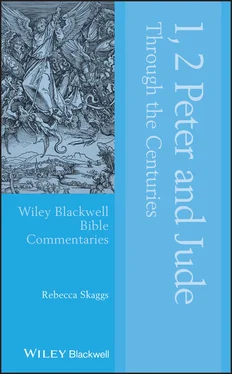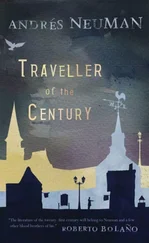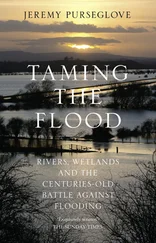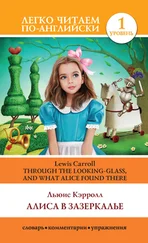Emerson (1992: vol. 4) understands the new birth in a different sense entirely, as evidenced by a sermon preached on several occasions. His text is Luke 20:38, and is entitled, “For all live unto him.” According to editor Wesley T. Mott, Emerson’s idea of order in nature is anticipated here. In any case, Emerson interprets the doctrine of the second birth (as in John 3.3 and 1 Pet. 1.23) as a transformation of character and behavior:
When a man begins strongly to feel the obligation of duty; when he begins to see the beauty of right actions, and to hate vice; when he begins to feel his debt to his Maker; there is such a growth and enlargement in his mind that he calls it a new life by emphasis; as if first he began to live. All the parts of his character acquire balance and energy; he becomes useful to his fellow men to the whole extent of his powers; so that he is born again. (Emerson, 1992: 122)
An exceptional hymn based on this chapter was written by Samuel Sebastian Wesley. Born on 14 August 1810, he was the first child of Samuel Wesley and his housekeeper, Sarah Suter. He inherited the outstanding musical abilities of his family and at the age of 22 was appointed organist and master of the choristers at Hereford Cathedral. While there, he composed the anthem “Blessed be the God and Father of our Lord Jesus Christ,” based generally on 1 Peter 1. Written for an Easter Day service, the circumstances surrounding the writing are certainly worthy of note and are described as follows by markfromireland on the website Saturday Chorale:
Apparently on that particular Easter Sunday only the trebles and one bass (the Dean’s butler) were available to sing. Despite this unpromising start “Blessed be the God and Father” is Wesley’s best‐known anthem sung in Anglican cathedrals and churches throughout the world. Structurally it’s a very taut piece of music consisting of five sections linked in an unbroken chain and characterized by a remarkable variety of musical textures. The opening is unaccompanied and well worth listening to in its own right but it’s the anthem’s central portion – a wonderful dialog between a solo treble and the treble chorus that lifts the piece from the merely very good to the extraordinary. This central section is flanked by passages for deeper voices while the final fughetta after “But the word of the Lord endureth forever” is announced by the (in)famous dramatic dominant seventh chord of E flat on full organ. It is performed in modern times, for example, by the Worcester Cathedral Choir, conducted by David Hunt, with Adrian Partington on the organ. (Saturday Chorale, posted on 31 January 2013)
The content vibrantly captures the theological and creative imagery of this text. It should be noted that the text is very similar to the translation of the authorized version:
Blessed be the God and Father of our Lord Jesus Christ,
which according to his abundant mercy
hath begotten us again unto a lively hope
by the resurrection of Jesus Christ from the dead,
To an inheritance incorruptible, and undefiled,
that fadeth not away,
reserved in heaven for you,
Who are kept by the power of God
through faith unto salvation
ready to be revealed at the last time.
But as he which hath called you is holy,
so be ye holy in all manner of conversation.
Pass the time of your sojourning here in fear.
Love one another with a pure heart fervently.
See that ye love one another.
Love one another with a pure heart fervently:
Being born again,
not of corruptible seed,
but of incorruptible,
by the word of God.
For all flesh is as grass,
and all the glory of man
as the flower of grass.
The grass withereth,
and the flower thereof falleth away.
But the word of the Lord endureth for ever.
Amen.( hymnary.org)
The Transformed Life: Three Metaphors (1:24 – 2:10)
The Grass Metaphor (1:24, 25)
Overview
This section is composed of three metaphors describing the transformed life: grass, milk, and living stones. They convey the dynamic quality of the life brought about by new life in Christ. Although two of them are in chapter 2of 1 Peter, together they create a coherent message about the transformed life, vividly illustrating complementary qualities of this existence.
Many of the ancient writers liked Peter’s use of the grass metaphor of Isaiah 40: 6–8. For example, Eusebius of Caesarea (c.260–340) comments, “Like the grass of the field and like beautiful flowers he [man] will soon wither and die” ( Catena , CEC 49: my tr.). Theodoret of Cyr expands it somewhat, allegorically: “But just as when the grass withers, the flowers fall off, so when men die, their pride and glory are extinguished” ( Catena , CEC 49–50L my tr.). Hilary of Arles adds another perspective, that the human being has two sides: the outer person is mortal like the flower of the field and will pass away, but the inner person lives forever by God’s power ( Intro. Comm. on 1 Peter , PLSupp).
This metaphor has some notable effects in culture as well. For example, in 1760, Anne Steele was inspired by 1 Peter 1:24 to write a poem entitled “Life is a span, a fleeting hour.” Steele captures the sense of the transience of life, seen through the lens of hope conveyed in the passage of Peter. She had certainly experienced suffering in an extraordinary way: she lost her mother at the age of three, became an invalid following an accident when she was 19, and finally her fiancé drowned on the day of their wedding. Hope still characterized her life and she cheerfully assisted her father in ministry for the rest of her life. Her poem was set to music in 1875 by John B. Dykes and is still popular, being included in 159 hymnals.
Life is a span, a fleeting hour;
How soon the vapour flies!
Man is a tender transient, flow’r,
That e’en in blooming dies.
The once‐lov’d form, now cold and dead,
Each mournful thought employs;
And nature weeps her comforts fled,
And wither’d all her joys.
But wait the interposing gloom,
And lo! stern winter flies;
And, dress’d in beauty’s fairest bloom,
The flow’ry tribes arise.
Hope looks beyond the bounds of time,
When what we now deplore
Shall rise in full immortal prime
And bloom to fade no more.
Then cease, fond nature! cease thy tears;
Religion points on high:
There everlasting spring appears,
And joys that cannot die.
( hymnary.org)
Johannes Brahms (1833–1897) based the second movement of his Requiem, “Denn alles Fleisch, es ist wie Gras” (translation: “For all Flesh is as Grass”), on this metaphor and cited 1 Peter 1:24, even though the same metaphor is in Isaiah 40: 6–8. As is customary for German requiems, it is scored for full symphony, including strings and harp, woodwinds, brass, and timpani accompanied by full chorus. Interestingly, the beginning of the movement is used in the opening credits of the BBC documentary film series The Nazis: A Warning from History , and segments are repeated during the closing credits. Clearly this is a radical shift from the meaning of the text of 1 Peter, but is another example of material from 1 Peter being used without the knowledge of its connection to the text of 1 Peter.
The Milk Metaphor (2:1–3)
Overview
This is the second of the three metaphors Peter uses to illustrate the transformed life. Together, they provide aspects of the new existence, contrasting this new existence with their old life: the grass focuses on the transience of life (fleeting like grass) versus the eternality of life in Christ; the milk metaphor highlights the intimate relationship with God which the new existence makes possible; and finally, the living stones describe the new community into which they are incorporated by the new life. The metaphors also reintroduce and elaborate the main themes of this section: for example, the characteristics of the life they have left behind. Lists of vices and virtues are a common rhetorical device in the Jewish and Hellenistic worlds as well as in the Christian tradition. This list, in particular (2:1), is relatively short and appears to generalize the categories of evil and wickedness. The author broadens the meaning of the terms for “malice” and “deceit” by using the adverb “all” (pas). These characterize the life they have left behind representing forms of behavior that “oppose the ethos and practice of love” to which they have recently been called (cf. Green, 2007: 52). They are now asked to leave behind this former lifestyle and to move forward into their new, transformed life, described in terms of motivation and growth.
Читать дальше












